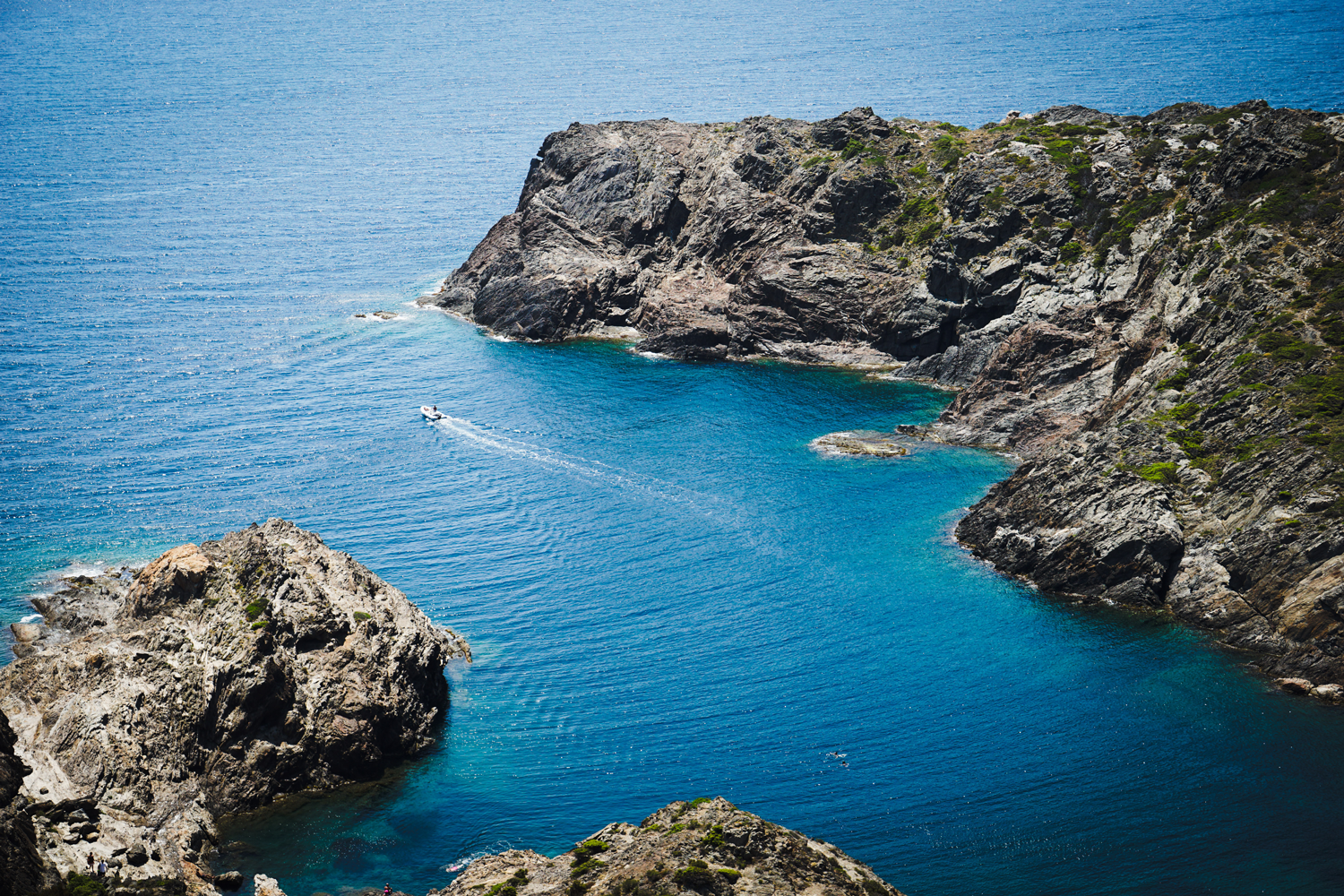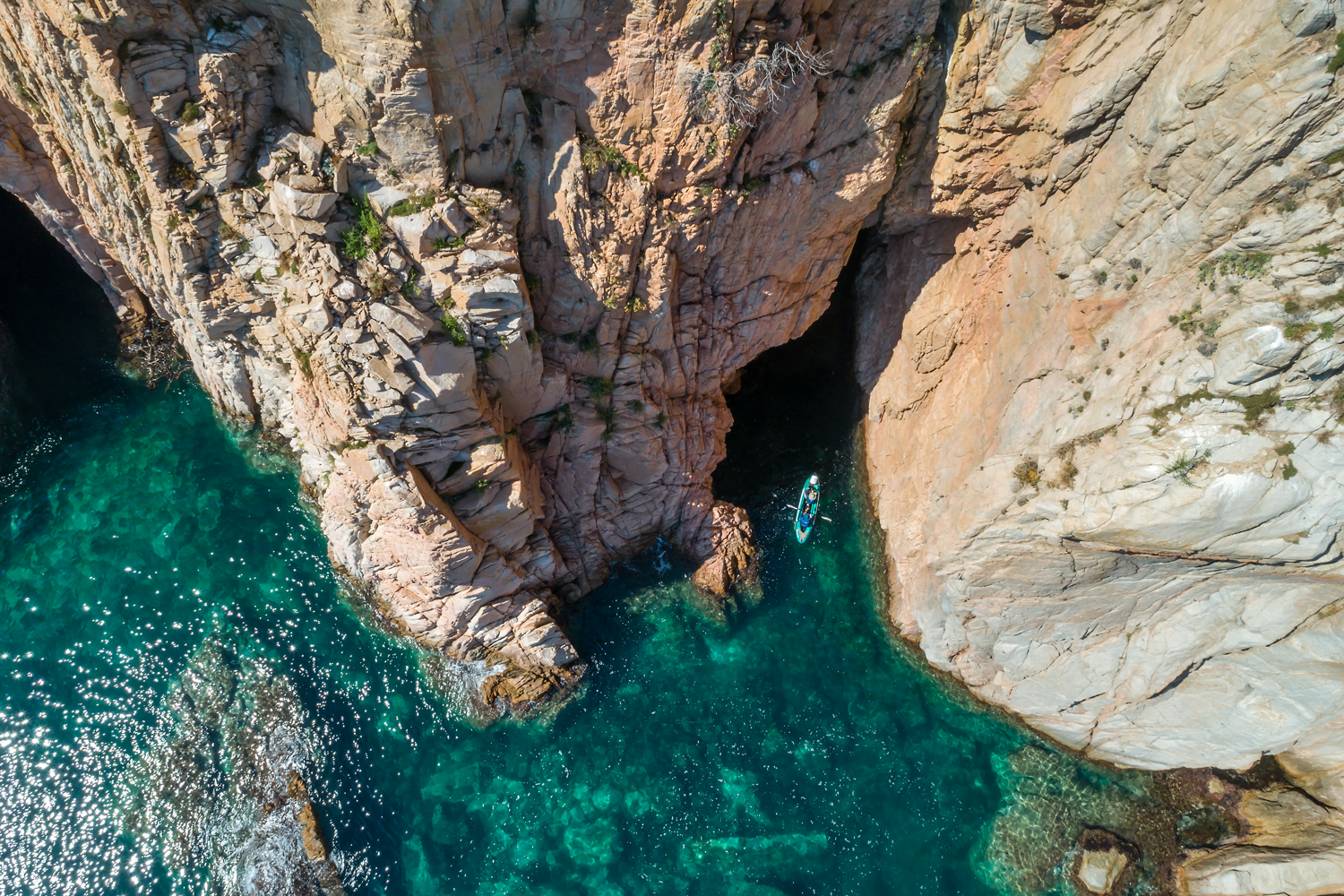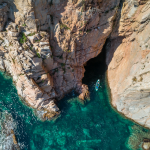The Costa Brava is famous worldwide for its coves, beaches, gastronomy, and beautiful villages. But it also hides countless idyllic spots scattered along the coastline of Girona.
One example of these are the four sea caves we want to introduce to you today: a perfect combination of beauty and calm that astonishes all tourists who visit them. Ready to discover them?
Cova de s’Infern
The Cova de s’Infern, more than a geographical feature, is a stunning work of art framed by the Mediterranean.
It is located inside the Cap de Creus Natural Park and is visible from above if you follow a path that starts at the base of the Cap de Creus lighthouse. The route is signposted and can be done on foot in about ten minutes.
As it is open on both sides, it can be crossed. Those who prefer to approach it by sea can do so by swimming, diving, or with a small boat. To do this, they must pass through a kind of channel formed by the erosion of the rocks.
Swimming in this natural pool is a delight, especially at sunset or sunrise. That’s when the origin of its name becomes clear: the orange tones of the sun and sky are reflected in the water, making this paradise evoke the gates of hell.
The plant and animal species that live beneath the waters of this place are a real spectacle capable of captivating anyone who decides to snorkel there.

Cova de’n Gispert
In Begur, between the coves of Aiguablava and Aiguaxelida, lies the Cova d’en Gispert. It is the longest sea cave on the Costa Brava and one of the most spectacular.
During the journey by sea that leads to it, you can admire the coastline and its high pinkish cliffs.
Standing in front of the Cova d’en Gispert, its narrow entrance is surprising. The cave is 150 metres long and has two clearly distinct areas. One is the Gallery, which stretches for 90 metres, and the other is the Final Chamber, where there is a small rocky islet. The depth varies depending on the section, ranging from four to eight metres.
There is no need to worry about getting lost inside, as its opening is visible from every angle and its path is practically straight.
In August, usually on the 21st and 22nd, a kayak expedition is organised: “Sunrise at Cova d’en Gispert.” A unique and thrilling experience where you have the privilege of watching the sunrise from inside the cave.
Want to know a fun fact? It is said that Dalí, impressed by its beauty and acoustics, chose it as the venue for a private concert for a select audience.

La Foradada
La Foradada is a natural tunnel carved into the mountain, located on the coast of the Montgrí Natural Park.
Those who follow the coastal path from Cala Pedrosa to Cala Ferriol will have the chance to see it.
It has a fairly wide entrance and exit. Thus, crossing the cave is not difficult if done by kayak or aboard a small catamaran.
Many families choose to spend a fun day exploring these incredible spots by boat. On organised excursions, there is usually a stop long enough for passengers to take a swim.
Time for a swim!

Cova de la Sal
In Torroella de Montgrí, specifically between Cala Montgó and Punta Milà, lies the Cova de la Sal.
Its main distinguishing feature compared to the other caves we’ve mentioned is that it has a small unspoiled cove full of pebbles. The shore allows kayaks or paddle boards to dock and rest while enjoying the silence.
It measures about 20 metres wide and 25 metres high and is much appreciated by the residents of L’Escala.
The marine life and rock formations that make up its seabed attract, year after year, a large number of diving and snorkelling enthusiasts.
Only those who have immersed themselves in its waters truly know the value and grandeur contained in this hidden Eden. Surely you’re already picturing yourself there!

If we’ve awakened your adventurous spirit, we hope you’ll soon have the chance to discover these marvellous caves. They will be waiting to gift you the silence and peace they hide beneath the rocks.
























